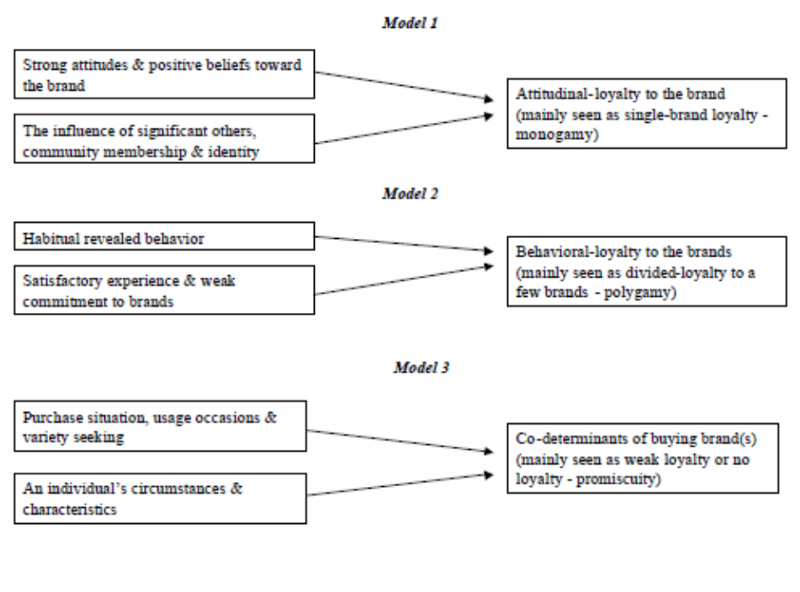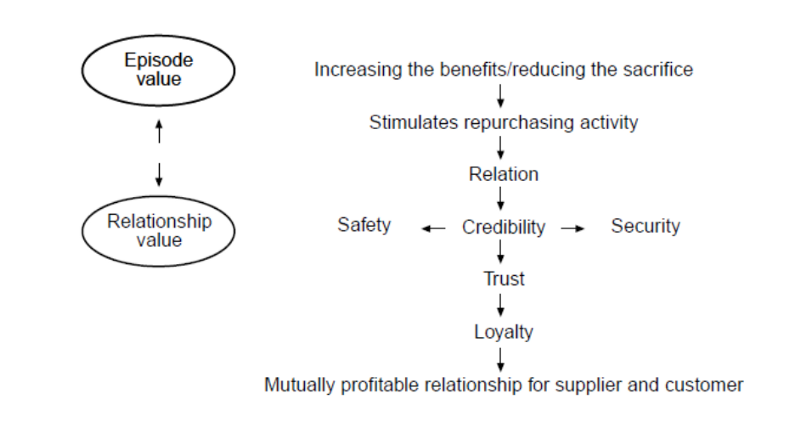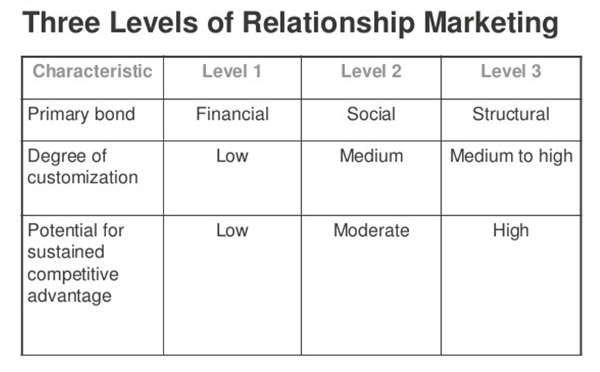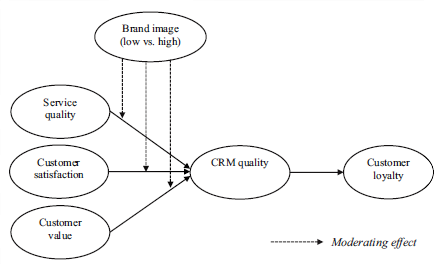Loyal customers are profitable to a business. We need to look after them.
This week’s blog discusses the topic of customer loyalty, using marketing theory to first define what loyalty is and how it relates to your relationships with customers.
Marketing strategies businesses can use to enhance the loyalty of their target customer are also explored.
What is Loyalty?
The mass-marketing approaches of the ’60s and ’70s ignored the role of customer loyalty as an important parameter of marketing activities. There has long been a shift from this transaction based-approach into a relationship-based strategy.
The focus changes from acquisition to retention. The new goal is to enhance customer loyalty by focusing on the lifetime value of existing customers, considered just as important as attracting new customers.
Loyalty is the maintenance of trust in a person, a party, an institution; which fosters strong feelings of support or allegiance. An individual has a sense of belonging to a relationship. In business, this feeling of loyalty a customer feels with a brand or business yields a deeply held commitment for consistent future consumption. Often, businesses use repetitious purchase behaviour as an indicator of loyalty. I use the term customer loyalty in this article as opposed to brand loyalty to emphasise that loyalty is a feature of people, rather than a characteristic of a brand.
“Customer loyalty is difficult to define. In general, there are three distinctive approaches to measure loyalty: behavioural measurements; attitudinal measurement; and composite measurements.” (Nyadzayo & Khajehzadeh, 2016).
Conceptualisations of Customer Loyalty (Uncles, Dowling & Hammond, 2003)
Loyalty pays off
Customer loyalty is profitable. A study found that “when a company retains just 5 percent more of its customers, profits increase by 25 percent to 125 percent.” (Bowen & Chen, 2001). Loyal customers provide more repeat business and are less likely to shop around, this higher retention of existing customers reducing marketing costs.
When a brand has generated loyalty from customers, their customer base becomes less sensitive to the marketing efforts of competitors. It makes sense that business focus their energy into strengthening relationships with customers, to enhance their loyalty.
The effect of value-adding strategies in a long-term relationship (Ravald & Grönroos,1996)
Relationship marketing
The foundation for a relationship marketing strategy is “a core service around which to build a customer relationship, customizing the relationship to the individual customer, augmenting the core service with extra benefits, pricing services to encourage customer loyalty, and marketing to employees so that they, in turn, will perform well for customers (Berry, 1983).
Relationship marketing is marketing activities that attract, develop, maintain, and enhance customer satisfaction and fostering customer retention. The focus is the lifetime value of the customer rather than the value of a single transaction –the underlying assumption being that establishing and maintaining relationships with customers will foster customer retention. Businesses use strategies to bond with their customers to enhance their commitment.
As you can see in the model above, trust is a component that comes before loyalty. Trust is one of the foundations of relationship marketing, and it is a customer’s willingness to rely on a certain business or brand. This reduces uncertainty and vulnerability, so it gives customers a good reason to stay in a relationship as they can value relationships that they do not have to monitor.
Building a relationship is based on the formation of a bond. This bond is the psychological, emotional, economic, or physical attachment that binds parties together. The strength of this bond can determine a customers’ commitment and loyalty to a brand.
Some customers will only bond with the company based on price. The first level of relationship marketing relies primarily on pricing incentives to secure customers’ loyalty where business bond with customers on the promise to save money. Service providers often reward loyal customers with special price offers. This advantage is unsustainable, and customer bond based on price will never foster true loyalty.
Practising higher levels of relationship marketing gives greater potential for sustained competitive advantage. Level two is a social bond, and level three is a structural bond. Structural bonds provide solutions to important customer problems, as discussed by Berry (1995): “When relationship marketers can offer to target customers value-adding benefits that are difficult or expensive for customers to provide and that are not readily available elsewhere, they create a strong foundation for maintaining and enhancing relationships.”
Targeting Profitable Customers
Certain customers will be more profitable to a business than others. Some are loyalty-prone if they receive good service, happy to use one brand or business. Whereas other customers are deal prone, always on the lookout for alternative and discount offers.
These types of customers are stayers and switches. Stayers have the possibility of lifetime value, as their motivation is to reduce their available choices and repeatedly use certain suppliers to simplify the process, and it reduces the perceived risks of consumption. Switchers do not exhibit loyalty and have a repertoire of brands from which they regularly choose. Having systems to recognize these characteristics of customers is important to help us target customers who are more likely to stay.
Customer satisfaction
Customer satisfaction is one of the most important criteria for customer loyalty. When satisfaction levels are high, the potential for loyalty is high; when satisfaction is low, there is a very low chance of retaining customers. Satisfaction is a popular measurement that marketers use to determine how happy customers are with their company’s services and or products.
Businesses can use research such as customer surveys to determine how happy their customers are and how to improve their experiences. Highly satisfied customers will also be far more likely to tell friends about your business. There is a correlation between higher satisfaction and positive word of mouth intent. The same also goes with loyalty — loyal customers are more likely to spread positive word-of-mouth and recommend your business to others.
Tools to enhance loyalty
The cost of replacing defected customers is significantly higher than the cost of retaining them. To enhance customer loyalty, there are several tools a business can use. I will discuss four options: Loyalty programs, benchmarking performance, CRM, and branding.
Loyalty programs
A popular strategy for maintaining customer loyalty is through loyalty programs. For example, a popular one is the coffee card at your local café, often getting the tenth coffee free. This strategy only tends to work if the frequency of consumption is high.
Loyalty programs provide financial and relationship rewards to customers, and there are two aims: · One is to increase sales revenues through increased purchase levels, and/or increasing the range of products consumed. · The second is a defensive aim, to build a closer bond between the brand and current customers, to maintain them in the current customer base.
Benchmarking performance
The second strategy to enhance customer loyalty is by benchmarking service quality. Improving service quality should increase customer loyalty. Relationship marketing and service improvement go hand in hand. Businesses should do everything they can to keep improving their customer experience. This service quality adds more value to the core product, which improves customer satisfaction, strengthening relationship bonds and increasing loyalty.
Benchmarking a level of performance you expect from your staff and/or systems helps ensure to keep the level of quality high.
Use customer surveys to analyse your services and take the results of your loyal customers. Use this as internal benchmarks for customers service quality. This means to set a minimum standard of service quality. Holding your business to a strict standard does not ensure every customer will return, but there will be an increase in loyalty. Furthermore, often dissatisfaction is because of a negative customer service experience rather than the product or service itself.
CRM — Customer Relationship Management
Advances in technology over the past thirty years has removed many of the barriers for businesses to maintain relationships with clients and customers. CRM is the managing of all your company’s relationships and interactions with customers and potential customers. Email database management for example enables businesses to regularly be in contact with customers. Because past experiences impact customer satisfaction, the quality of a CRM can mediate how customer satisfaction translates into loyalty. When customers perceive a higher quality of CRM, this strengthens relationships.
“CRM quality comprising of trust and commitment is crucial in building and maintaining long-term relationships and enhancing customer loyalty.” (Nyadzayo & Khajehzadeh, 2016)
Model of customer loyalty (Nyadzayo & Khajehzadeh, 2016)
Brand image
The fourth way to increase customer loyalty is through investing in your branding, and the image you portray in the minds of customers. Your brand can be a mediator of the link between satisfaction and loyalty. The more customers connect with your brand, the more they trust you. Research has shown (Nyadzayo & Khajehzadeh, 2016) that a stronger brand image can lead to a higher perceived CRM quality, enhancing loyalty. Just look at Apple around ten years ago!
A strong brand “increases customers’ trust of invisible products, while helping them to better understand and visualise what they are buying” (Berry, 2000).
That is it for another week and blog — I hope you enjoyed this week’s topic about customer loyalty and learnt something new that you can implement in your business.
Read more: What is Customer Loyalty? An Important Topic You Can’t Miss Out On



